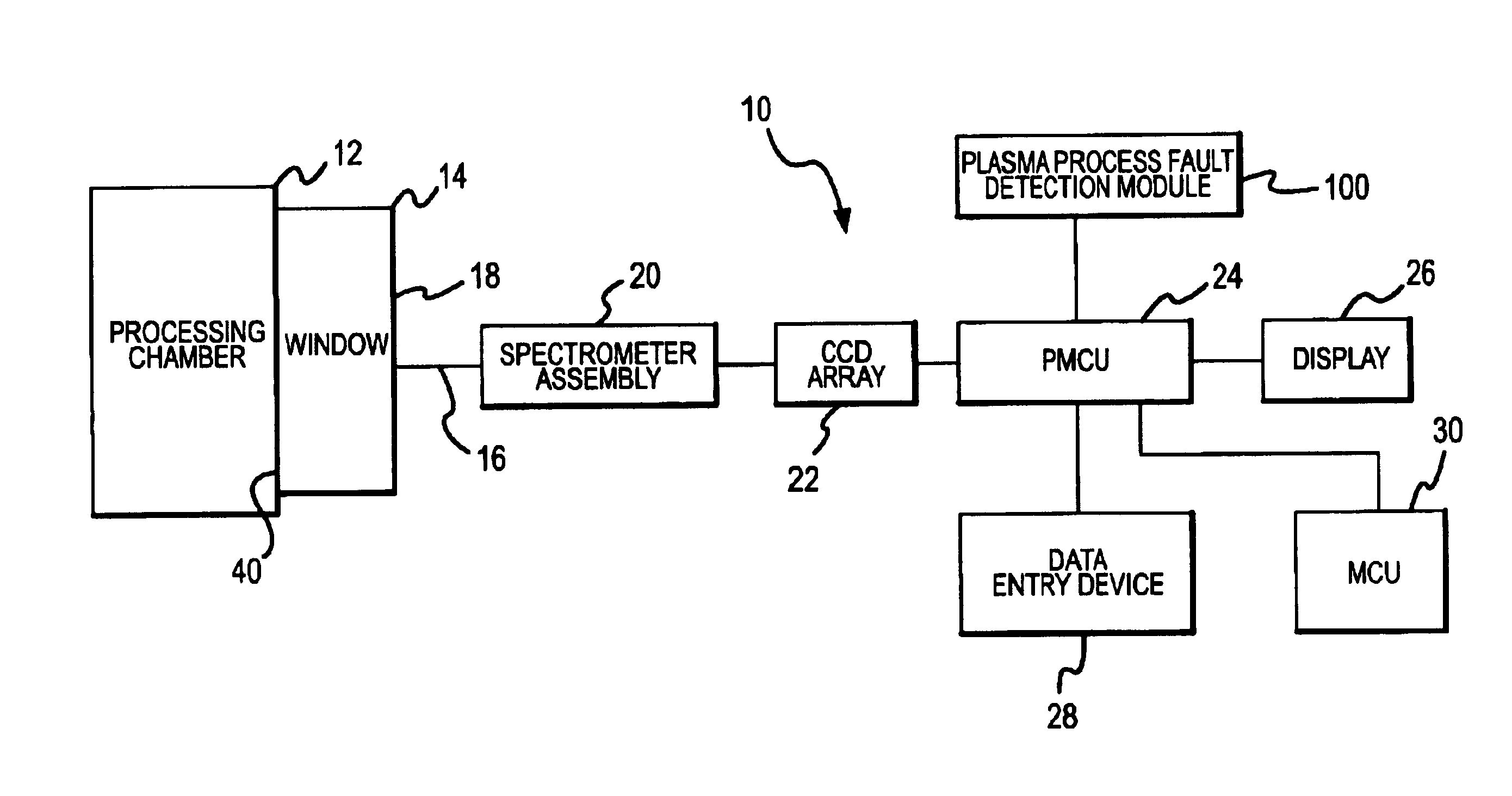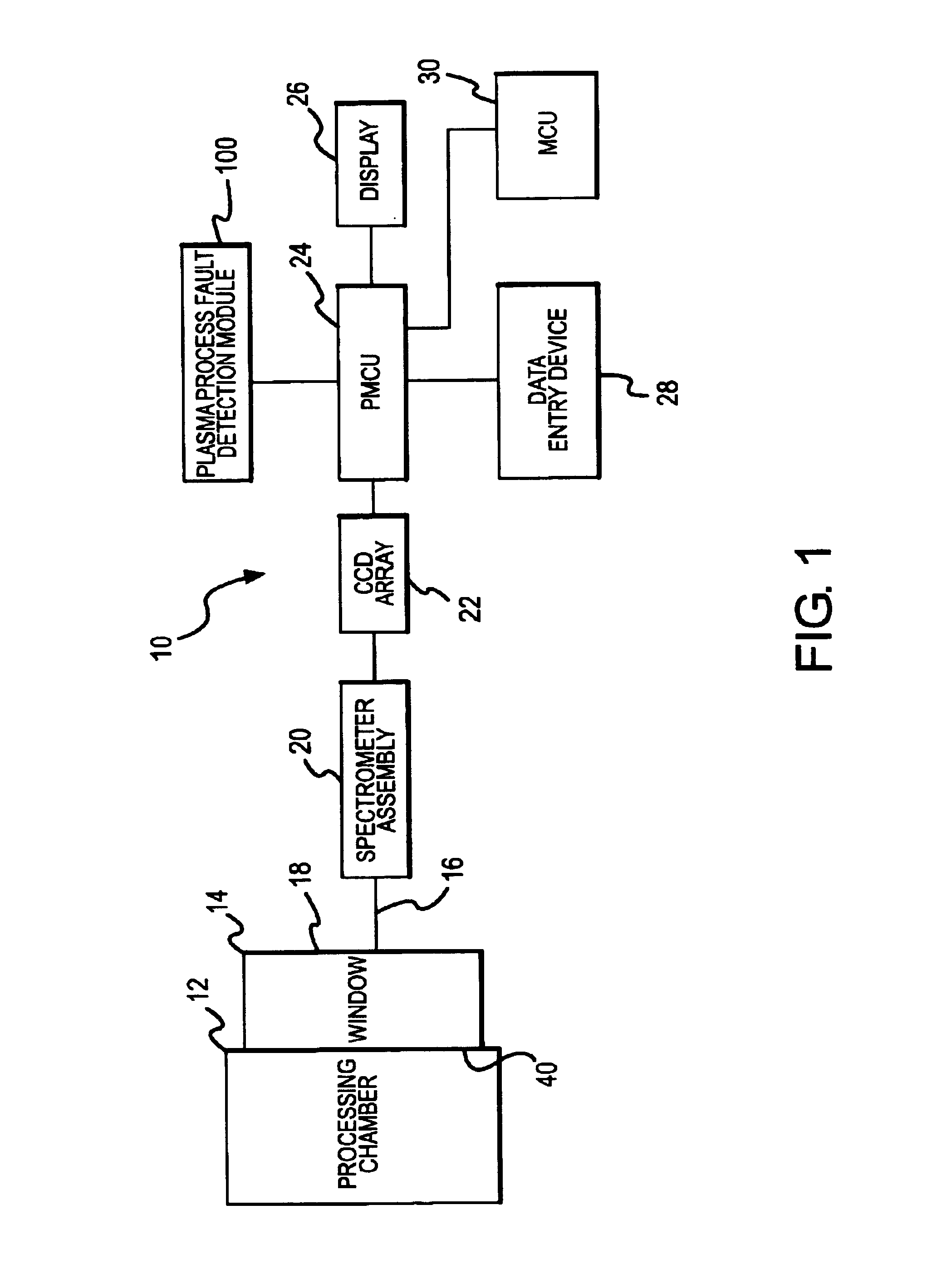Industrial process fault detection using principal component analysis
a technology of industrial process and principal component analysis, applied in the direction of testing/monitoring control system, instruments, nuclear elements, etc., can solve the problems of loss of at least about $75,000 in revenues, monitoring operations that do not necessarily provide an indication of how the plasma process is actually proceeding, and plasma may not be performing properly
- Summary
- Abstract
- Description
- Claims
- Application Information
AI Technical Summary
Benefits of technology
Problems solved by technology
Method used
Image
Examples
Embodiment Construction
[0027]Referring to FIG. 1, there is shown one embodiment of an assembly for monitoring / evaluating plasma processes (hereafter “plasma monitoring assembly 10”) that may be used to collect optical emissions spectra (OES) data from a plasma process conducted within a plasma processing chamber 12 of a wafer production system. In other embodiments, sensors other than those of OES may be used. The plasma monitoring assembly 10 operatively interfaces with a window 14 of the plasma processing chamber 12 by receiving optical emissions of the plasma which pass out of the processing chamber 12 through the window 14. These optical emissions are “collected” by an appropriate fiber optic cable 16, one end of which is positioned at or near the outer surface 18 of the window 12. Optical emissions of the plasma within the processing chamber 12 during processing of a wafer therein enter the fiber optic cable 16 and are directed to a spectrometer assembly 20. Both scanning-ty...
PUM
 Login to View More
Login to View More Abstract
Description
Claims
Application Information
 Login to View More
Login to View More - R&D
- Intellectual Property
- Life Sciences
- Materials
- Tech Scout
- Unparalleled Data Quality
- Higher Quality Content
- 60% Fewer Hallucinations
Browse by: Latest US Patents, China's latest patents, Technical Efficacy Thesaurus, Application Domain, Technology Topic, Popular Technical Reports.
© 2025 PatSnap. All rights reserved.Legal|Privacy policy|Modern Slavery Act Transparency Statement|Sitemap|About US| Contact US: help@patsnap.com



